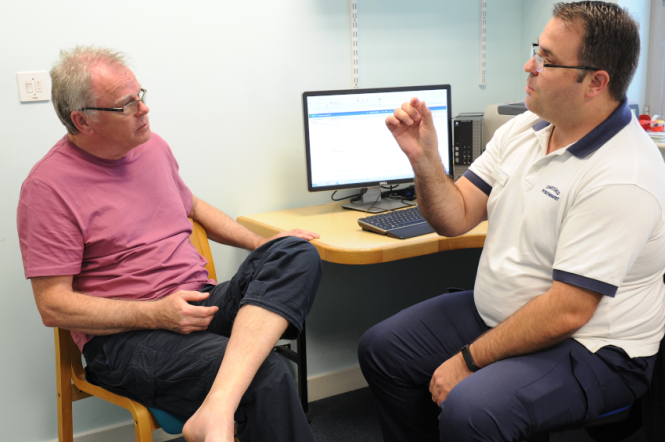

The guilt of neglecting pain in physiotherapy practices is a significant concern that impacts patient outcomes. This is a critical consideration in patient-centered care, necessitating a profound understanding of pain management in physiotherapy. Physiotherapy is a discipline focused on restoring function and alleviating pain through various therapeutic interventions. However, not all practitioners prioritize a patient-centered approach, and neglecting pain management can lead to long-term complications and diminished patient satisfaction. This article explores the significant responsibility physiotherapists hold in understanding and addressing the multifaceted nature of pain, delving into responsible practices to prevent and mitigate the guilt associated with neglecting patient needs. We will examine the importance of thorough assessments, tailored treatment plans, and open communication. This guide will cover the guilt of neglecting pain by exploring practical strategies for creating a truly holistic approach to patient care.
The Importance of Thorough Pain Assessments
Initial Evaluation and Subsequent Monitoring
Thorough assessments are the cornerstone of responsible pain management in physiotherapy. An initial evaluation must meticulously consider the patient’s medical history, current physical condition, and specific pain characteristics. This includes identifying the source of the pain, its intensity, location, duration, and any aggravating or relieving factors. Comprehensive assessments should employ validated pain scales to quantify pain levels and monitor their evolution during the treatment process. For example, the Numeric Rating Scale (NRS) or Visual Analog Scale (VAS) are common tools used for this purpose.
Diagnostic Accuracy and Adaptability
Beyond initial assessments, ongoing monitoring is vital. Physiotherapists must diligently track changes in pain levels, functional limitations, and overall patient well-being. This continuous monitoring allows for adjustments to the treatment plan based on individual responses. Accurate diagnosis is pivotal. Relying solely on subjective reports is insufficient; objective measures like range of motion testing and neurological examinations are equally crucial. This adaptive approach ensures treatments remain relevant to the patient’s evolving needs.
Tailoring Treatment Plans to Individual Needs
Personalized Interventions
Every patient experiences pain differently, and treatment plans should reflect these individual variations. Physiotherapists should tailor interventions to address specific needs, keeping in mind both the physical and psychological aspects of pain. This personalized approach involves incorporating diverse techniques, such as manual therapy, exercise programs, and modalities like heat or cold therapy, according to the patient’s specific situation. For instance, a patient experiencing chronic back pain might benefit from a combination of spinal mobilization, core strengthening exercises, and relaxation techniques.
Adapting Interventions to Patient Progress
Treatment plans are not static. They must be regularly assessed and adjusted based on the patient’s response to interventions. Observing the patient’s progress is paramount; adjustments should consider any changes in pain perception, functional improvement, or limitations. This dynamic approach ensures that the treatment plan remains effective and addresses the evolving nature of the patient’s condition.
The Role of Open Communication and Collaboration
Building Trust and Transparency
Effective communication is paramount in mitigating the guilt associated with neglecting patient pain. Open and honest dialogue between the physiotherapist and the patient creates a trusting environment. Actively listening to the patient’s concerns, addressing their questions, and fostering a sense of partnership are essential to ensuring the patient feels heard and understood.
Establishing Realistic Expectations and Goals
Transparent communication helps establish realistic expectations and goals for treatment. Setting achievable goals allows patients to actively participate in their recovery journey. This involves clearly explaining treatment options, potential benefits and drawbacks, and expected outcomes. Regular progress reports and feedback sessions further enhance the therapeutic alliance and facilitate a supportive environment.
Case Studies of Responsible Physiotherapy Practices
The Importance of Patient-Centered Care
Numerous case studies underscore the importance of patient-centered care. For instance, studies have shown that patients with chronic pain who felt heard and understood by their physiotherapist reported better pain management outcomes. This emphasizes the importance of a truly personalized approach.
Using Evidence-Based Treatments
In another example, a study using a multidisciplinary approach involving physical therapy, psychological support, and occupational therapy demonstrated substantial improvements in pain management for patients with complex chronic pain conditions.
Implementing Evidence-Based Strategies
Prioritizing Research
Integrating evidence-based strategies into pain management is paramount. Physiotherapists must stay updated on the latest research findings and incorporate those findings into their practice. This includes understanding the latest research into chronic pain management, neuropathic pain, and other related areas.
Implementing best practice recommendations
Using a multidisciplinary approach with the collaboration of other healthcare professionals can provide a comprehensive strategy. For example, coordinating care with physicians, psychologists, and occupational therapists can improve the patient journey.
In conclusion, understanding the guilt of neglecting pain and adopting responsible physiotherapy practices is crucial for patient well-being and optimal outcomes. By prioritizing thorough assessments, individualized treatment plans, and ongoing communication, physiotherapists can alleviate suffering, restore function, and empower patients to actively participate in their recovery journey. To delve deeper into these principles, consider further education and certifications in pain management and rehabilitation. This will allow you to better address the multifaceted needs of your patients and contribute to a more holistic approach to their care.